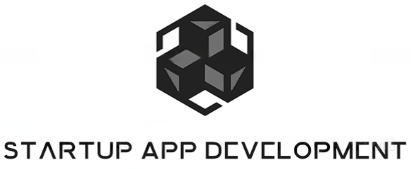In today’s fast-paced digital world, being a successful startup app developer requires more than just knowing how to write code. It’s about a blend of technical prowess, creativity, and business acumen that allows you to bring innovative solutions to life. Whether you’re just starting or looking to refine your toolkit, these essential skills are vital to thriving in the competitive app development landscape.
1. Understanding User Experience Design
Creating an app that users love begins with understanding what they want and how they interact with digital products. Prioritizing user experience design ensures that your app is intuitive, accessible, and enjoyable, laying the foundation for user satisfaction and success.
A successful startup app developer is keenly aware of the importance of UX design in retaining users and enhancing app usability. User experience is not just about aesthetics but also about ensuring that the app solves user problems efficiently. Incorporating user feedback into design iterations can significantly improve the final product.
To craft a seamless user experience, an app developer should also be familiar with modern design tools like Sketch or Figma. These tools enable the creation of interactive prototypes and help developers experiment with various design elements and user flows before they are implemented. This iterative process is essential in avoiding costly redesigns further down the line.
2. Proficiency in Multiple Programming Languages
A versatile developer is one who can navigate various programming languages. By diversifying your coding skills, you can adapt to different project requirements and continuously push the boundaries of innovation in the app development field.
With the rapid advancement of technology, staying current with new and emerging programming languages can give you a competitive edge. Each language has its strengths, and choosing the right one can greatly impact the efficiency and capability of your app. For instance, mastering popular languages like JavaScript, Swift, or Kotlin can open doors to creating both web and mobile applications.
3. Strong Problem-Solving Abilities
The world of app development is full of challenges that require quick and efficient solutions. Having strong problem-solving skills allows you to troubleshoot effectively, minimizing downtime and maximizing productivity as you bring your app to market.
Problem-solving in app development often involves debugging complex code and optimizing performance bottlenecks. It requires a systematic approach: identifying the root cause of issues, devising the best solutions, and implementing them efficiently.
Developers often utilize algorithms and data structures as the backbone of problem-solving. A deep understanding of these concepts can significantly enhance your capability to solve technical challenges and improve your app’s performance.
4. Effective Communication Skills
Communication plays a crucial role in conveying ideas, collaborating with teams, and understanding client requirements. As a startup app developer, being able to communicate effectively can make the difference in turning ambitious concepts into reality.
Effective communication extends beyond verbal and written skills. It’s about actively listening to stakeholders and translating their feedback into actionable insights that advance the development process. This not only helps in resolving conflicts but also strengthens teamwork and assures everyone is on the same page.
5. Business Savvy and Market Awareness
Understanding the market and having a keen business sense is essential to creating apps that not only function well but also sell well. This skill helps you align your app’s features with users’ needs and anticipate industry trends, staying ahead of the curve.
Being aware of current market trends and consumer behavior can significantly influence how you approach your app design and marketing strategy. Incorporating the latest features and ensuring that your app remains relevant to users’ needs can propel its success.
6. Project Management Expertise
Taking an app from concept to launch requires careful planning and execution. Project management skills help you stay organized, meet deadlines, and manage resources efficiently, ensuring that your app development process runs smoothly.
Utilizing project management tools like Trello or JIRA can streamline your workflow by keeping track of tasks and progress. These tools facilitate transparent communication within the development team, keeping everyone aligned toward the common goal.
7. Continuous Learning and Adaptability
Technology is ever-evolving, and staying updated with the latest trends and tools is crucial for success. Having a mindset of continuous learning and adaptability not only keeps your skills relevant but also opens up new opportunities for innovation and growth in your career.
The landscape of technology shifts rapidly, making it vital to engage in ongoing education and skills development. Whether it’s learning a new coding framework or attending industry conferences, these efforts contribute to a developer’s ability to adapt to change, harnessing new knowledge to fuel their creativity.










